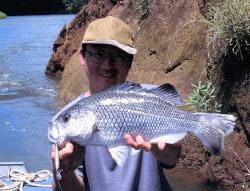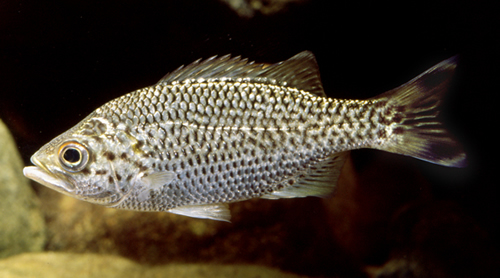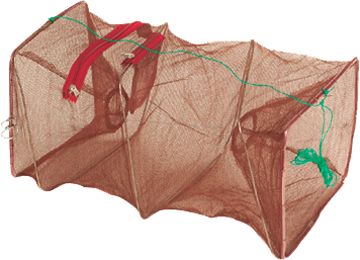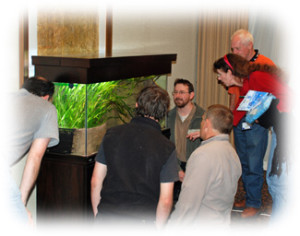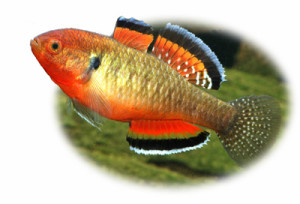 By David Morgan, Murdoch University and Jeff Whitty, Murdoch University at The Conversation
By David Morgan, Murdoch University and Jeff Whitty, Murdoch University at The Conversation
The Northern River Shark (Glyphis garricki) is one of the rarest species of shark in the world. It is known only from a small number of locations in Western Australia, the Northern Territory and Papua New Guinea. Discovered in Australia in 1986, only 36 specimens have been recorded here since.
The Northern River Shark is a 2.5-3 metre long shark belonging to a family known as whaler or requiem sharks. Its closest relative in Australia is the Speartooth Shark, also found in northern rivers and estuaries and listed as Endangered by the IUCN. Distinguishing between the two is difficult, but is based on the location of the “waterline”, the point where the darker upper-body colouring of the shark changes to lighter lower colour.
The eyes of the Northern River Shark are also unusually small, and are probably not relied on for finding prey. Instead, the Northern River Shark possess a relatively large concentration of ampullae of Lorenzini. These organs allow the shark to sense the electric fields of other organisms, and find them in the turbid rivers where the shark lives.
Although described as a river shark, the Northern River Shark has been most commonly seen in tidal and highly turbid estuaries and seas. Typically only newborns and small juveniles are observed in rivers approaching freshwater salinity levels.

The Speartooth Shark (Glyphis glyphis), closely related to the river shark and also endangered. Bill Harrison, Wikimedia Commons
Status
The status of the Northern River Shark is unknown. However, evidence of small population numbers has led to the recent listing of this species as Critically Endangered on the IUCN Red List, and as Endangered under the EPBC Act. The Speartooth Shark is listed as Endangered under the IUCN and Critically Endangered under the EPBC Act, demonstrating some the issues of listing.
We assume this species is rare from the small number of recorded individuals, although this may be a byproduct of the remoteness of its habitat. Misidentification and limited research attention may also be problematic. As always, more research is required to better understand Northern River Shark populations.
Threats
Habitat degradation is likely to be a primary threat to the Northern River Shark, as this species is typically found close to the shore.
While areas in the Northern Territory and northern Western Australia, such as the Fitzroy River and King Sound, are relatively pristine, they are under ongoing threats from damming, mining and water programs.
In recent years, Doctor’s Creek in King Sound, a known habitat of the Northern River Shark, has been proposed as the site of a tidal barrage for power generation. Such a barrier would limit movement of local fishes into this habitat.
Commercial and illegal net fishing also pose a threat. The fishes targeted, like Barramundi (Lates calcarifer), often occupy the same habitat as the Northern River Shark.
Strategy
The development of a multi-species recovery plan, which includes the Northern River Shark, is currently underway by the federal government. In addition, complete protection has been provided to this species at the Federal and State (Western Australia and the Northern Territory) levels.
Efforts to increase public awareness of and education about the Northern River Shark have also been undertaken in Western Australia and the Northern Territory. Recreational and Indigenous fishers, local volunteers and the Kimberley Land Council Rangers have all been included in research efforts. Identification keys and appearances on international TV also raise the species' profile.

A shark in the hand: this Northern River Shark has been tagged in the attempt to collect more information on the species. Jeff Whitty
Conclusion
The status of the Northern River Shark is poorly understood, but establishing a recovery plan to ensure the conservation of this unique species is warranted. However, a better understanding of ecology and biology of the Northern River Shark is needed. Such information would increase the efficacy of any strategy developed to protect the species.
To ensure the long-term survival and/or recovery of the world’s few remaining Northern River Shark populations, it is important to educate and involve local communities and recreational fishers with conservation and management efforts. Current regulations need to be enforced. Overall, the natural balance of habitats like King Sound need to be conserved.
The Conversation is running a series on Australian endangered species. See it here.
David Morgan received funding from the Department of the Environment, Water, Heritage and the Arts.
Jeff Whitty received funding from the Department of the Environment, Water, Heritage and the Arts.
This article was originally published at The Conversation.
Read the original article.
